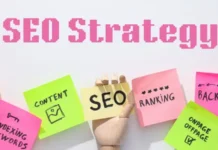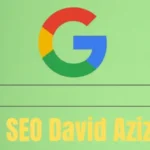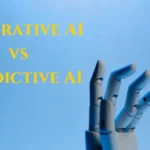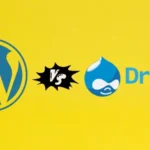Internet users do not like advertising, and if you are planning your marketing and advertising strategies for your company, you must learn about new trends and more efficient alternatives.
Today I can say, without fear of being wrong, that Internet users do not like advertising; I refer to the facts.
Most of us have an advertising blocker (AdBlock) installed in our computer browser; we skip the ad when watching videos on YouTube, and many other facts make that statement more than evident.
In the case of YouTube, it’s not just that we skip advertising, but many of us have already expressed how inconvenient it is for a video to be paused to show us an ad, even though this platform ignores our complaints – and of course, it doesn’t. They’re going to do it because that’s how they make money.
We have made ourselves immune to publicity, at least to that publicity that does not interest us and does not provide us with any value; or that publicity that appears at the least indicated moment.
We will see from now on that the most assertive advertising is the one that is aware of the right moment to attract the user’s attention.
In this article, we will see how a company uses the milestones achieved when connected to the Internet to offer us advertising and how this system promises to be one of the best future solutions.
You who have an Internet business and who are planning your marketing and advertising strategies need to know more about the new trends in web pages and advertising because if you continue working as you have been doing, it is likely that you will not obtain the desired results. Imagine, if we all use ad blockers, who will see yours? You need to think of more efficient alternatives.
I, as always, but especially now because I am part of an online marketing company, begin by inviting you to reflect on the quality of what you display in your ads; remember that Internet users need to assign a value to advertise, so that begin to interact with it, that is, to enter your website, to leave their email addresses or the conversion goal that you have outlined.
Now we will see the characteristics of Internet advertising in the not-too-distant future; again, the invitation is that you analyze the information and plan a change in strategy according to your needs and business objectives.
Native Advertising
The issue of advertising and blockers worries us all, but it has a very creative solution. What is being implemented is native advertising; that is, they stop using ads that differ from the rest of the content and begin interacting more naturally.
For example, instead of placing advertising in the form of a banner on a Blog, what is done is to create a piece of content that is useful for your company’s target. Within that context, a call to attention is made to your business.
Note that in this case, the blockers have no effect because it is not, as such, an advertisement but something specific to the website. This is also valid for mobile applications.
Later we will see that the future of Internet advertising is not in the desktop version, but first, I have to talk about native advertising on mobile devices. Social networks are usually the best example of native advertising, and what is sought is for the brand to interact as one more person, providing valuable content.
If you use Snapchat, you will know what I am talking about; in this network, there is a section for brands, but they do not advertise their products. Instead, they interact with the user, which adds a lot of value; I will always repeat the same thing to you: think about the content.
In the case of mobile applications other than social networks, native advertising can also be done, but differently. In fact, this is what the venture I told you about at the beginning proposes.
Users online
So, we talk about doing native advertising because it is not very susceptible to blockers, but there is much more to the future of advertising on the Internet. The trends aim to give value to connected users regardless of which group they fall into.
Until now, groups such as age, sex, and location have been used to predict the success of an advertising campaign since it was supposed to be correct to say, for example, that young people used the Internet the most. Time has proven us wrong because just as we see young people connected to the Internet all day, we can find older people doing the same.
In fact, in some cases, it may be the elderly who connect to the Internet the most. With this revelation, advertising tends to focus on the people connecting rather than those who are part of a specific group.
Of course, for a specific brand, what will be a trend is to give preferential treatment to those elements of the target that connect the most since these people are more likely to translate into customers for the business.
I have told you that there are entrepreneurs who propose to work with connected users and currently associate advertising, as the guys from Kiip do, for example. Later we will see a bit about the philosophy by which they have been inspired. In essence, it is from what I have told you about: use the right time to display advertising and make it so attractive that it does not go unnoticed.
Advertising that seizes the moment
In this section, I will talk about Kiip ‘s philosophy because they believe in advertising that takes advantage of the moment and that goes against what we see, for example, on YouTube.
The idea is to use a system of rewards that are activated at the right time that does not seek to interrupt but instead integrate into the dynamics of the application.
For example, a company could hire native advertising in a game because it has studied and determined that its target is there. So, the moment a person reaches a milestone, let’s say, passes a level, the advertising for such a company appears.
The idea is that advertising is not just another advertisement but a reward; We will discuss that in the next point.
What people want from an advertising
We must understand this new way of advertising where not only the way the ad is displayed is changed, but the ad itself is changed. Every company must adapt to what is attractive to its potential client, and that is where the idea of rewards is born.
Notice that we are talking about advertising that is going to be based on the native, that is, that it is going to interact with the application, that it is going to consider users who actually connect and are active on the Internet. Still, it also comes into play Advertising with a reward system.
What is sought is to take advantage of the milestone achieved with the application and give a prize sponsored by the company that hires the application, Which is very attractive to me.
Is that what people want from advertising? Of course, they do because advertising encourages them to get to know the brand and interact with it.
Recognition and sale of products
Obviously, companies that join this type of native advertising in mobile applications will get their businesses more recognition. The users of the different applications will say, ” These are the people who reward me for achieving the objectives in that application “, and a relationship of empathy will be created.
Obviously, all advertising will have objectives for the conversion of users that can be achieved thanks to a desirable advertising methodology.
Note that the idea, which will surely be the future of advertising, is that the ad stops being invasive and of little value and becomes something really profitable for the user.
As I have already said, once the conversion objectives are achieved, it is more likely that the sales of products and services in a company will improve, which is the ultimate objective of any advertising strategy and, more specifically, when we talk about the marketing plan. Marketing and commercials on Black Friday, Cyber Monday, and other key dates.
The importance of the information collected
However, to successfully adapt to the new trends in Internet advertising, we must pay close attention to the data collected, especially those generated in the middle of the campaign.
Let’s give an example. You decide to launch a native advertising campaign that generates some statistical data, such as the conversion rate, the times the ad was seen, and the achievement of the objectives, among others. You have two options: either you study those numbers and decide how to improve the campaign, or you keep doing the same thing repeatedly.
The problem with not analyzing the numbers is that failures can occur in the strategy, and you would not be able to solve it; therefore, everything would be a waste of time and money.
It is necessary to evaluate the evolution of the campaign, especially to detect if what you are offering is what your target wants.
The prevalence of mobile devices
I told you I would talk about mobile devices, and here we have arrived. It’s only possible to talk about the future of advertising by mentioning mobile devices.
You may say that all this that you have told me applies only to mobile phones. What about people who connect from their desktop computers? The truth is that since there is such a marked preference for using portable devices to connect to the Internet, we must focus our efforts on it.
I am not saying that native advertising is impossible in desktop versions; I already gave you a reference with the Blog, but the real strength is mobile devices. Thousands of people connect every day through mobile devices, and those are the people you want the advertising of your product or service to reach.










![Imginn Instagram Story and Photos Anonymous Viewer Tool [Free] Imginn](https://www.iblogtech.com/wp-content/uploads/2023/09/imginn-150x150.webp)



